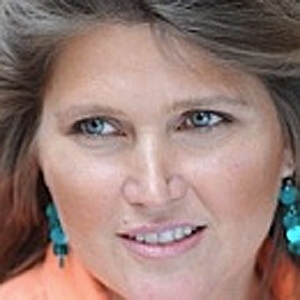How Employee Resource Groups Fulfill Diversity Objectives and Grow Leaders

This article was updated on July 25, 2018.
Passionate employees are engaged employees, and what enterprise wouldn't want to tap into that energy? Many enterprises do just that through employee resource groups (ERGs), also known as business resource groups (BRGs).
Today's ERGs are not the affinity or networking groups of old. Successful ERGs are tied to business objectives, work closely with marketing, HR and other functions and are active communities. Done right, ERGs not only help refine product, processes and services, they also enhance engagement and attract and create future leaders for the organization.
Why an Employee Resource Group?
"There are a number of good reasons organizations should encourage or create ERGs," says Deborah Dagit, a vice president and chief diversity officer for 22 years, most recently at Merck, and now founder of Deb Dagit Diversity, a diversity and inclusion (D & I) consultancy that serves Monsanto, Linkage, Sodexo and others. "They enhance employee engagement, and therefore, enhance discretionary effort. They also give the employee a line-of-sight to the business priorities of the organization. It's a mechanism for contributing to the success of the organization that [employees] might not otherwise get."
Recruitment and retention is another key reason for having and sustaining ERGs. They're often used to help tap diverse communities. For example, "a military resource group knows how to reach other vets," says Pegine Eschevarria, former Society of Human Resource Management Diversity Panelist, speaker and founder of Team Pegine, Inc., a D & I consultancy based in Florida serving Intel, General Motors, Verizon, among others. Vets can speak at military venues to help attract other vets. "The good part about that is, from a retention perspective, the ERG enables very focused coaching, mentoring and sponsoring to occur within the group so resources can have a higher degree of connection within the organization."
Deeper connection begets longevity, which means lower turnover.
ERGs Bring Value
From a marketing and sales perspective, Dr. Robert Rodriguez, president of Chicago-based DRR Advisors, a boutique diversity consulting firm that specializes in ERGs and serves Princeton University, BP, Pfizer and others, says to look to the growing Hispanic community as an example of value. "The insurance industry sees the growing Hispanic community as a catalyst for economic growth. Many organizations ask ERGs, 'How can we raise our brand and reputation within the Hispanic community? How can you help us recruit more Hispanic agents who may be bilingual to help us better serve that community?'"
Assistance from an ERG not only helps diversity efforts within the enterprise, but helps build the brand and reputation within target communities, while also grooming potential leaders.
How to Create Successful ERGs
Successful ERGs "must be given clear, thoughtful and succinct guidelines," says Dagit. "They must be given a line-of-sight to the business, which means giving them a highly engaged executive sponsor who informs their ERG and career development." ERGs cannot be formed as just a group, but as a business vehicle with "a purpose aligned with long-term strategy," says Eschevarria. "They're not social service organizations, but part of the business infrastructure."
ERGs must also be in alignment with the funding party. Once the ERG knows what it must accomplish, it must ensure it has the budget to accomplish the goals, otherwise, Eschevarria says, "there needs to be a conversation."
There are enterprises that want to tap the value of ERGs, but don't want to fund them adequately, Dagit warns. "It's a disturbing trend." There should be a balance between the value the ERG gets for its members and for the enterprise. "It should be both — not either."
ERGs must also be able to "move and engage Millennials" to survive, says Eschevarria. "They'll have to really be about their careers to get them to engage, because of the time commitment. Millennials want to know that, "If I'm going to spend my time, talent and treasure on this, I need to get value for that." While particularly true for millennials, this sentiment may hold true for all generations of workers.
Last Word on ERGs
Dagit, Eschevarria and Rodriguez agree that the consensus on ERGs among their combined hundreds of national and global clients is that their existence allows an enterprise to derive full value from diversity initiatives. For example, Nielsen invests heavily in making their community as diverse as possible because, according to their CHRO, "it fuels our growth, drives innovation and helps us create great outcomes for our clients." The organization is "committed to leveraging the talents of our employees to increase engagement," and they are "excited about the opportunities that the collaborative and innovative work of our Employee Resource Groups bring to our business."
But Dagit cautions that just aspiring and committing to diversity is only half the battle. To truly embrace diversity and incorporate it wholsale into your organizational cutlure "you have to have a solution, and ERGs are the mechanism or process that allows that solution to happen."



